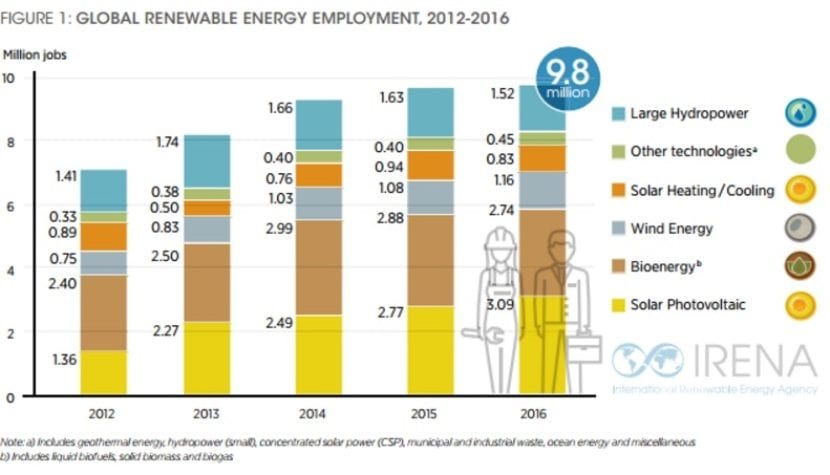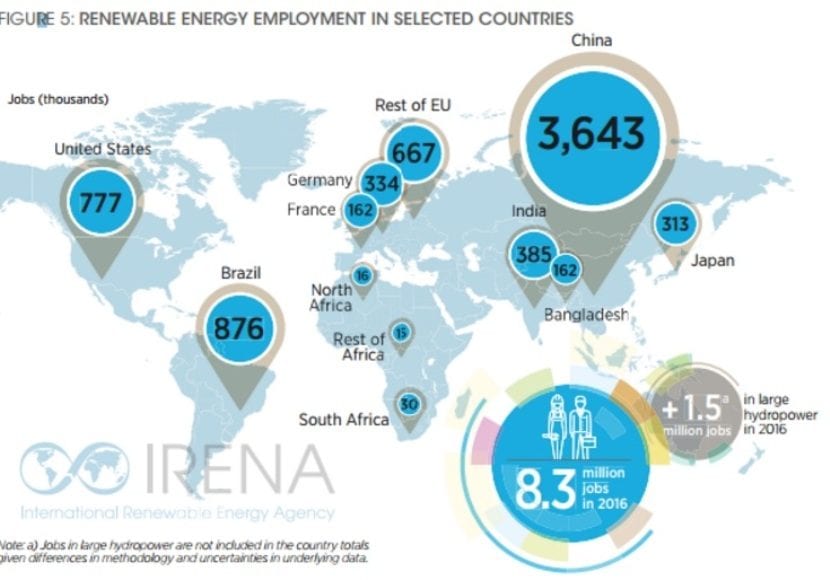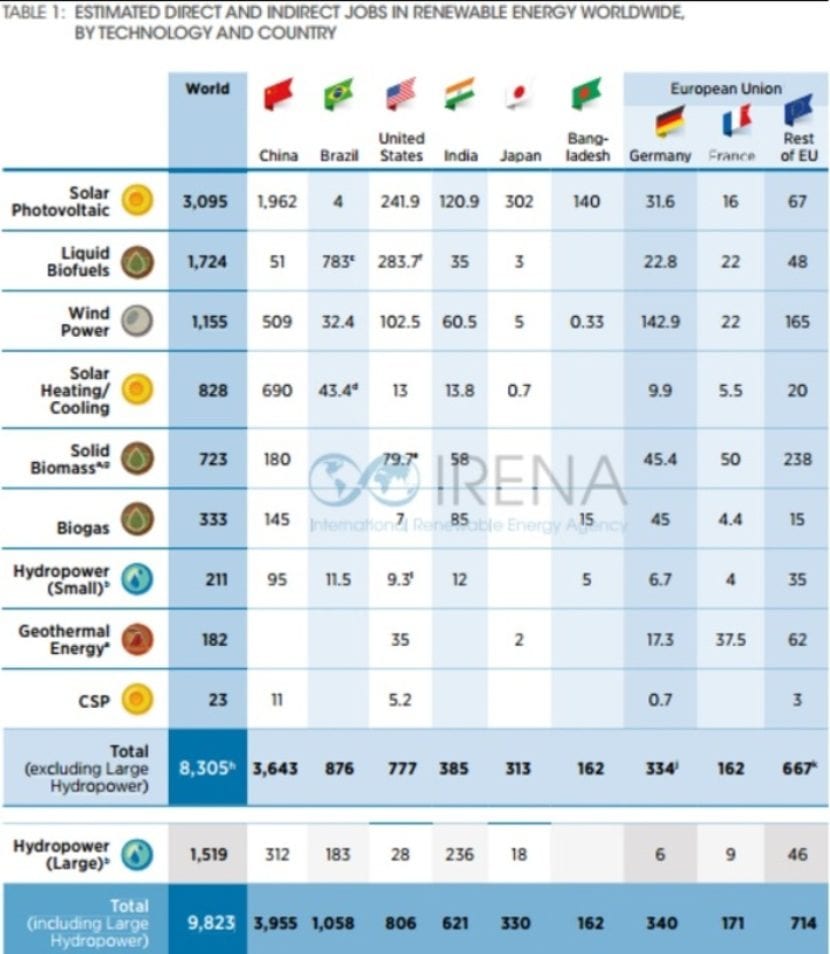
It can be said that renewable energies create more jobs than fossil fuels, to be more exact about 10 million people worked in the renewable energy sector in 2016.
These data have been obtained in the report of Renewable Energy and Employment of the International Renewable Energy AgencyKnown as IRENA, providing the latest employment figures in this sector and an overview of the factors affecting this labor market in the course of the 13th meeting of the IRENA Council.The director of the agency, Adnan Z. Amin He said: “Falling costs and enabling policies have consistently boosted investment and employment in renewable energies around the world since IRENA's first annual assessment, carried out in 2012, when just over five million people worked in the sector ”to which he later added:“ in the last four years, for example, the number of total jobs in the solar and wind sectors has more than doubled"
This can be seen perfectly in this graph here.

"Renewables are directly supporting broader socio-economic goals, with job creation increasingly recognized as a central component of the global energy transition.
As the scales continue to tilt in favor of renewables, we expect that the number of people working in the renewables sector could reach 24 million by 2030, which would offset job losses in the fossil fuel sector and become a major economic engine around the world, ”added Amin.
However, excluding hydroelectric energy, it is observed in the annual review that the Global employment grew by 2,8% and reached 8,3 million people working on renewable energy in 2016.
If we count direct employment from the hydroelectric the total number of employees amounts to 9,8 million, with a 1,1% increase compared to the previous year.
Jobs located in Countries
Most renewable energy jobs are in: China, Brazil, the United States, India, Japan, and Germany.
Where in China, to put a case, they worked a 3,4% more people in renewables in 2016, which is equivalent to 3,64 million.
And Asia as a whole is the continent with the most renewable employment, 62% of the total.
If we continue with these countries and add the United States, IRENA in its report shows that energy photovoltaic solar is the most “employer” energy 2016 with a 12% more than in 2015 (3,1 million jobs).
Jobs in the solar industry of the United States increased 17 times faster, growing 24,5% over the previous year.
However, jobs in Japan were cut for the first time while in the European Union they continued to decline.
In the case of wind employment, the new wind installations have contributed to the creation of 1,2 million jobs, which represents an increase of 7%.
In bioenergyThe countries that have proven to be the main labor markets are once again China, the United States, India and Brazil is added to this.
Thus representing biofuels with 1,7 million jobs, 0,7 million in biomass and about 0,3 million in biogas.
The Director of IRENA's Policy Unit and Deputy Director of Knowledge, Policy and Finance Ferroukhi rage stated: “IRENA has provided a more complete picture this year on the state of employment in the renewable energy sector, including data from the large hydroelectric projects sector. It is important to recognize these 1,5 million additional workers, as they represent the largest renewable energy technology by installed capacity ".
As I have said before, the 62% of jobs are in Asia, according to the report.
Still, installation and manufacturing jobs continue to move into the region, especially in Malaysia and Thailand, which have become the world center for solar photovoltaic manufacturing.
Africa development
On the other hand, in Africa utility-scale renewable energy developments have made great strides with 62.000 renewable jobs on the continent, represented by three quarters of those jobs in South Africa and North Africa.
“In some African countries, with the right resources and infrastructure, we see jobs emerging in manufacturing and installation for large-scale commercial projects. However, for much of the continent, distributed renewables, such as off-grid solar power, are bringing access to energy and economic development. These mini-grid solutions are giving communities the opportunity to take a leap in the development of traditional electricity infrastructure and create new jobs in the process, ”said Dr. Ferroukhi.

